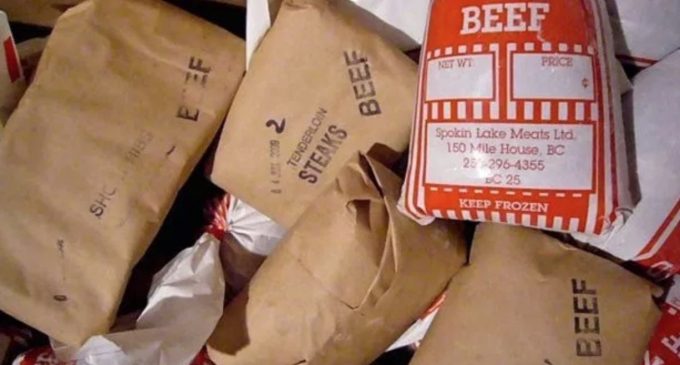
The first thing you need to do is make sure you start out with the best cut of meat for your dish. I prefer to purchase my steaks direct from the butcher. Even if I am not going to be using them that day I always feel better about the quality of meat vs the flash frozen slabs you find at any major grocer.
The Traditional Way
A good old-fashioned thaw overnight in your fridge is, in my opinion, the best method — and in some instances, the only method (more on that below). This takes a bit of planning, though; sometimes more than 24 hours, depending on the size of what you’re trying to defrost. No way is a 20-pound turkey defrosting overnight. Stick to things like smaller roasts (three to four pounds), a chicken, a steak or ground beef. A plus side to taking a bit more time is that if those dinner plans are canceled, you’ve got some time before you need to cook it: about a day or two for chicken or ground meat, three to five days for red meat. You can refreeze, but there will be some loss in quality.
The Hasty Way
For something a little less time-consuming, I recommend a cold-water bath. I don’t remember much from physics, but I do recall a thing or two about thermodynamics. Number one is that water is a much better conductor than air. So if you want to speed that defrost time up a bit, get yourself a bowl of cold tap water. Tap water temps can vary, so add some ice to keep things on the safe side: 40°F or below. Small packages of about a pound or less can take up to an hour. Something on the three- to four-pound side may take up to three hours. For jumbo items like a turkey, the USDA recommends a general rule of 30 minutes per pound.
Some things to keep in mind: Make sure the packaging is sealed. You don’t want to introduce bacteria into the food, nor do you want it to absorb water like a sponge. If you haven’t purchased something vacuum-sealed, you’re going to need a leakproof bag of your own, or make sure you zip those ziplocks real tight. Also, make sure to change the water every 30 minutes. Some local health departments require cold running water to thaw, but you’re not a restaurant, and the FSIS (the public health agency of the USDA) says to change it every 30 minutes, so that’s good enough for me. Plus, it’s a terrible waste of water.
Finally, unlike defrosting in the fridge — where you can refreeze the meat — you’ll need to cook meat thawed in water right away, just in case it was held at a temperature above 40°F.
The Out-of-the-Box Way
The third way might come as a bit of a shock to you, but fear not: The Journal of Food Science, Harold McGee and The New York Times all say it’s okay. Here goes: You can use hot water to defrost meat. Now, there are some pretty important caveats here: Mainly, this is only to be done on cuts of meat one inch thick or less and within a certain temperature range. The USDA says around 102°F. Harold McGee says 125°F. I’m good with what Mr. McGee says. Results vary, but plan on anywhere from as little as just over three minutes to around nine minutes. Feel comfortable knowing that the USDA is fully on board: “These water-bath times are so short that any bacterial growth would remain within safe limits,” say the guidelines. Common sense applies here, so please don’t thaw large roasts or turkeys this way. For those, stick to the fridge or cold water.
What is your go-to preferred method? Let us know in the comments below.
Source: FoodRepublic


There are no comments at the moment, do you want to add one?
Write a comment